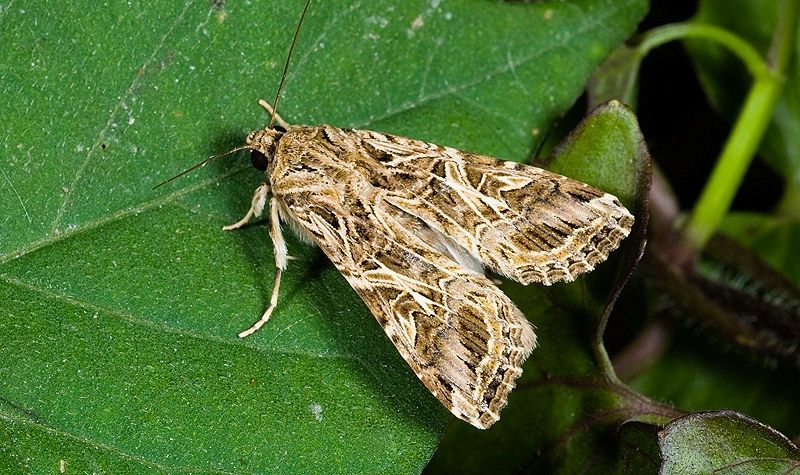Amendments to EU plant health rules for False Codling Moth
- 18/02/2022
- Posted by: Gaetan Dermien
- Category: ACP EN, Africa, Angola, Benin, Burkina Faso, Burundi, Cameroon, Caribbean, Côte d'Ivoire, Democratic Republic Of The Congo, Dominican Republic, Ethiopia, Gambia, Ghana, Guinea, Headline, Kenya, Mali, Mauritania, Mauritius, News, Nigeria, Pacific, Rwanda, Senegal, Sierra Leone, Tanzania, Togo, Uganda, Zambia, Zimbabwe

The EU has introduced new legislation to amend plant health rules covering False Codling Moth (FCM, Thaumatotibia leucotreta). The new draft regulation has been submitted to the WTO for a feedback period, period until the 11th April 2022. The date of implementation is not yet known.
FCM is listed as a priority pest under EU plant health regulations ((EU) 2019/1702). Unfortunately, as this pest has been intercepted on several host plants in recent months during EU border controls, stricter rules have now been introduced. The new requirements target, in particular, countries that have been using options to export under FCM-free places of production (option C), or a systems approach for FCM control (option D).
The draft regulation introduces new FCM-related rules for the following crops:
Revised import requirements for fruits of Capsicum, Citrus (other than Citrus aurantiifolia Citrus limon), Prunus persica, and Punica granatum (point 62 of the annex)
Action needs to be taken to protect exports of these crops to the EU from 11th April The most important points to note are for countries exporting these crops according to the options (c) “pest free place of production” or (d) “systems approach/post-harvest treatment”:
1. The NPPO must send a list of production site codes in advance in writing to the European Commission (EC)
2. Details of the systems approach (or the post-harvest treatment method) for FCM must be communicated in advance to the EC together with documentary evidence of its effectiveness.
3. Prior to export, the fruits must be inspected (by the NPPO) for the presence of FCM, including destructive sampling of 10% of the visually inspected fruits
4. For every consignment, the code for the production site must be included on the phytosanitary certificate. (Alongside the description of the product, you must write the unique identification number or name of the approved production site).
5. In the Additional Declaration, the NPPO must copy and paste the Option selected by the country. For example, for Option (c), copy and paste the following text: “The consignment complies with Option (c) of Points 62 of Annex VII to Implementing Regulation (EU) 2019/2072: no signs of Thaumatotibia leucotreta to which those fruits are known to be susceptible, have been observed at the place of production and in its immediate vicinity since the beginning of the last complete cycle of vegetation, on official inspections carried out at least monthly during the three months prior to harvesting, and none of the fruits harvested at the place of production has shown, in appropriate official examinations, signs of the relevant pest, and information on traceability is included in the phytosanitary certificate”
The amendments introduced in the new draft regulation affect a number of ACP export crops, targeted because they are a known pathway into the EU of a serious quarantine pest that could damage EU agriculture or the environment. NPPOs and export sectors in the countries concerned need to act now in order to ensure that the necessary steps are taken to allow exports to continue after 11th April 2022.
Amendments like this are generally made following risk assessments, or where there have been large numbers of non-conformities in imports from third countries. In this case, the rules have been tightened due to repeatedly high numbers of FCM interceptions from a number of countries, often in consignments exported under option (c) “free place of production”. Stricter measures must be now put in place in each exporting countries and communicated to the EU before the 11th April.
The following text is extracted from the revised Annex to the Draft Regulation, and lists the options that must be used in order to export after 11th April. The amendments concern Point 62 of Annex VII to Implementing Regulation (EU) 2019/2072, and they affect Options (c)and (d), the most commonly used by exporting ACP countries. They bring in strict new requirements for approval of production sites, inspections, and information.
Point 62 (amended)
This gives 4 options that specify strict conditions for the management of FCM (T. leucotreta):
In fruits of Capsicum (L.), Citrus, other than Citrus aurantiifolia (Christm.) Swingle Citrus limon (L.) Osbeck. and Citrus sinensis Pers., Prunus persica (L.) Batsch and Punica granatum L. (pomegranate)
From countries on the African continent, Cape Verde, Saint Helena, Madagascar, La Reunion, Mauritius and Israel
The 4 options are as follows:
Option (a)
the fruits originate in a country recognised as being free from Thaumatotibia leucotreta in accordance with relevant International Standards for Phytosanitary Measures, provided that this freedom status has been communicated in advance in writing to the Commission by the national plant protection organisation of the country of origin
or
Option (b)
the fruits originate in an area established by the national plant protection organisation in the country of origin as being free from T. leucotreta, in accordance with the relevant International Standard for Phytosanitary Measures ISPM 4,which is mentioned on the phytosanitary certificate, provided that this freedom status has been communicated in advance in writing to the Commission by the national plant protection organisation of the country of origin
or
Option (c)
(i) the fruits originate in a place of production established by the national plant protection organisation in the country of origin as being free from T. leucotreta in accordance with relevant International Standard for Phytosanitary Measures ISPM 10, and which is included in the list of place of production codes that has been communicated in advance in writing to the Commission by the national plant protection organisation of the country of origin, and
(ii) the fruits have been subject to official inspections carried out in the place of production at appropriate times during the growing season and prior to export, including a visual examination and destructive sampling of 10% of the visually inspected fruits, and have been found to be free from T. leucotreta, and
(iii) the fruits are accompanied by a phytosanitary certificate that indicates the place of production codes, allowing traceability to the places of production
or
Option (d)
(i) the fruits have been produced in an approved site of production, which is included in the list of production site codes that has been communicated in advance in writing to the Commission by the national plant protection organisation of the country of origin, and
(ii) the fruits have been subjected to an effective cold treatment to ensure freedom from T. leucotreta or an effective systems approach to ensure freedom from T. leucotreta or another effective post-harvest treatment to ensure freedom from T. leucotreta in accordance with the relevant International Standards for Phytosanitary Measures ISPM 14 and ISPM 42, provided that the systems approach or the post-harvest treatment method together with documentary evidence of its effectiveness has been communicated in advance in writing to the Commission by the national plant protection organisation of the country of origin, and
(iii) prior to export the fruits have been subjected to an inspection for the presence of T. leucotreta, including destructive sampling of 10% of the visually inspected fruits, and
(iv) the fruits are accompanied by a phytosanitary certificate that indicates the production site codes, allowing traceability of the sites of production and mentions the use of a systems approach or details of the treatment method.’
COLEACP Plant Health Guides
COLEACP provides plant health guidelines on the export of several ACP export crops. These are currently being updated to incorporate the recent changes introduced under Regulation (EU) 2021/2285, as well as these latest amendments:
– (New) Guidelines on the export of fresh guava, papaya, and Annona
– (Update in process) Guidelines on exporting fresh capsicum from the Caribbean (version 2020)
– (Update in process) Guidelines on the export of Capsicum from Africa, Madagascar, Cape Verde, and Mauritius (version 2020)
– (Update in process) Guidelines on exporting fresh eggplant and tomato from Africa, Madagascar, Cape Verde, and Mauritius (version 2020)
– (Update in process) Guidelines on exporting fresh citrus from Africa, Madagascar, Cape Verde and Mauritius (version 2020)
– (Update in process) Guidelines on the export of fresh mango to the European Union (version 2020) – new version expected in end of February 2022
These guides provide a clear explanation of what needs to be done in order to ensure that exported produce is in compliance with EU phytosanitary requirements. It details the information to be provided, and actions to be taken, at all stages from production to export by producers and exporters, as well as by the national authorities and inspection services.
Those documents are publicly available in our E-library https://eservices.coleacp.org/en/e-library?search_api_views_fulltext=guidelines
This information is published as part of the activities of the Fit For Market SPS programme. Fit For Market SPS is a COLEACP programme funded by the European Union within the framework of the Development Cooperation with the Organisation of African, Caribbean and Pacific States (OACPS).

![EU and GB MRL changes in 2024 (May– August 2024) 9-FFM+-[ENG]](https://news.colead.link/wp-content/uploads/2024/06/9-FFM-ENG-150x150.jpg)

